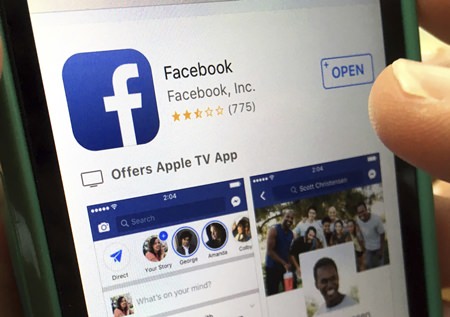
New York (AP) – Facebook’s effort to limit the spread of fake news using outside fact-checkers appears to be having an effect – although that finding comes with a major caveat.
 Once a story receives a false rating from a fact-checker, Facebook says, subsequent “impressions” can fall off by 80 percent. Impressions count the number of times Facebook users see a particular post.
Once a story receives a false rating from a fact-checker, Facebook says, subsequent “impressions” can fall off by 80 percent. Impressions count the number of times Facebook users see a particular post.
But it routinely takes more than three days for a false story that appears on Facebook to be passed along to fact-checkers and given a false rating. And most impressions occur when the story first comes out, not three days later. That’s the case with all news, both true and fake.
The information was shared in an email from a Facebook manager sent to the company’s fact-checking partners, including The Associated Press. Facebook gave an AP reporter access to the email.
Jason White, Facebook’s manager of news partnerships, wrote in the email that the company is working to identify “these hoaxes sooner.”
“We also need to surface more of them, as we know we miss many,” he wrote.
At the same time, he added that it is “equally important we do this the right way, and don’t restrict legitimate speech. It’s a difficult tension, but we are confident we can improve our efforts.”
Facebook has long stressed that it only wants to go after the “worst of the worst” offenders when it comes to false news and hoaxes. While many stories may be disputed as biased or partially false, the company is trying to avoid the appearance of censorship.
This is also why, as part of its fact-checking program, a story must be found false by at least two fact-checkers before Facebook will label it as “disputed.”





